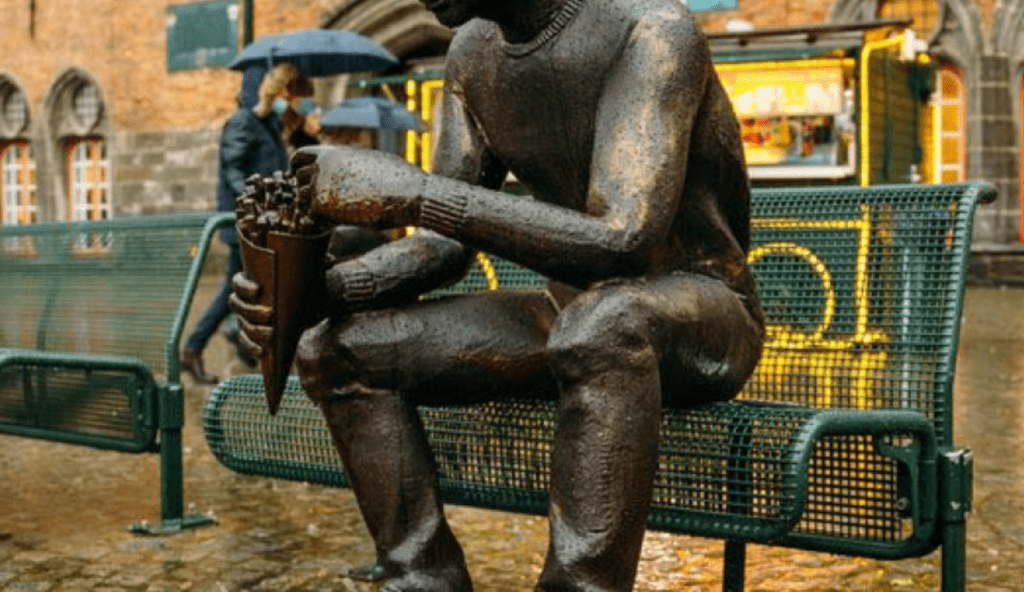As Belgium prepares to celebrate the “Week of the Friet” paying homage to the country’s famous fries, a statue called De Frieteters (the fry eater) was unveiled in Bruges over the weekend.
“Golden yellow crispy frites from the fryer: our fries culture is part of our cultural heritage,” said Hilde Crevits (CD&V), Flemish Minister of Agriculture and Food.
“Almost everyone has their favourite fry, their favourite sauce, their regular order, their regular fry ritual.”
The new statue can be found on the Bruges market square closeby two iconic fry stands and statues of local folk heroes Jan Breydel and Pieter de Coninck (both credited with involvement in a violent uprising against French King Philip the Fair).
It depicts a man sitting on a bench enjoying a cone of frites and will remain there for a year.

Photo from VILT
The 22nd edition of The Week of the Friet takes place between 29 November and 5 December and is an initiative of the Flemish Agricultural and Fisheries Centre (VLAM), the National Association of French Fryers (Navefri) and Belgapom, the Belgian potato association.
“Our fries, our national pride, deserve to be put in the spotlight at least once a year. With the Week of the Friet, we want everyone to think again about the taste and experience that are so unique to fries from the fryer,” said Liliane Driesen of VLAM.
“Besides the inauguration of the statue, attention will also be paid to our national pride online. Several influencers will share their frites adventure with their followers this week.”
Every year in Belgium, around 5 million tonnes of potatoes are processed into fries, purees, crisps and flakes.
In 2014, Belgian fry culture was included on the Flanders Inventory of Intangible Cultural Heritage, followed in 2016 by the French Community and in 2017 by the German-speaking Community and the Brussels-Capital Region, according to the Flemish Infocentre for Agriculture and Horticulture (VILT).

